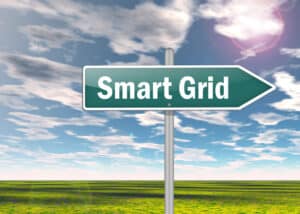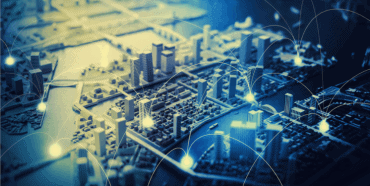
Emerging edge computing solutions enable data-driven optimization of generation, distribution, and consumption.
Transitioning to cleanly generated electricity has long been a goal of the energy sector, but its efforts have long been stymied by load-balancing and load-shaping challenges, exacerbated by a dearth of consumption information and coordination between energy sources coming online. Now, edge computing and 5G networks are changing the equation, setting a new course for the decades ahead.
Indeed, information is power, as spelled out in the latest eBook available from Dell and Intel. Emerging edge computing solutions enable data-driven optimization of generation, distribution, and consumption. 5G enables high-capacity, ultra-low latency data communications for real-time control.
The challenges to energy providers keep mounting. Society is increasingly relying on electric power, not only for light, heat, and air conditioning but also to power vehicles and computers. It is estimated there will be one billion more significant energy users in the world by 2030. At the same time, global energy usage is expected to increase by 47% over the next quarter century.
The challenge is daunting. While 29% of the world’s electricity already comes from renewables, and the goal is to reach 90% by the year 2050, to meet carbon net-zero targets. This requires a three-fold growth in renewable electricity over the next decade, along with a $4 trillion-a-year investment. It’s far more expensive to build new generating plants – which run into the billions of dollars – than to employ intelligent technologies that can anticipate and balance load demand. “To achieve this, grids will need the capacity to make intelligent autonomous decisions based on real-time data and very large numbers of variables,” the book’s authors relate.
See also: Data-Driven Edge Critical to the Modern Energy Environment
Consider the new sources of electricity that need to be orchestrated and distributed. “The growing number of end users investing in microgeneration and energy storage,” the eBook’s authors point out. “Each producer/consumer may only feed a few kW of surplus energy back to the grid each year, but this capacity grows in significance as it is multiplied across millions of households and businesses. The increasing uptake of electric vehicles is also fueling interest in V2G (vehicle-to-grid) technologies. Here, high-voltage vehicle batteries release power back to the grid at peak times, aiding in demand response and reducing pressure on the grid.”
The same load balancing principle “could also be applied to domestic appliances and industrial processes, controlled by an edge of smart meters at every consumer site,” the book continues. “Smart dishwashers can automatically be scheduled to operate at the optimal time overnight when electricity prices are lowest, and there is available renewable energy.”
The problem that edge and 5G address is the ability to bring renewable forms of energy online in an efficient and intelligent manner. “In order to keep up with the shift to dynamic, distributed power generation, energy grids need to embrace IT advances like automation and artificial intelligence, together with edge computing and high capacity, ultra-low latency data communications,” the report points out.
See also: Tackling Industrial-Scale Decarbonization Efforts with AI
These technologies integrate two sides of energy-generation technology: moving from “simple” operational technology built on proven operational technologies that manage well-understood power grid dynamics. By incorporating advanced IT, power providers can introduce automation and artificial intelligence to manage and optimize massively complex power grid dynamics.
For example, a new generation of 5G-enabled intelligent meters are increasing sampling rates from four times an hour to 32KHz. 5G connectivity will be essential to grid enable a range of devices, including electric vehicles, battery storage, smart devices, and Solar PV.
Edge and 5G technologies will also boost the efficacy of wind turbines, which are typically deployed in farms. “Optimizing the performance of the turbines requires careful coordination,” according to the book’s authors. “A new generation of control systems is being developed to take advantage of the low latency, high bandwidth capabilities of 5G to improve generating capacity and reduce operations and maintenance costs using AI-enabled predictive maintenance algorithms.”





